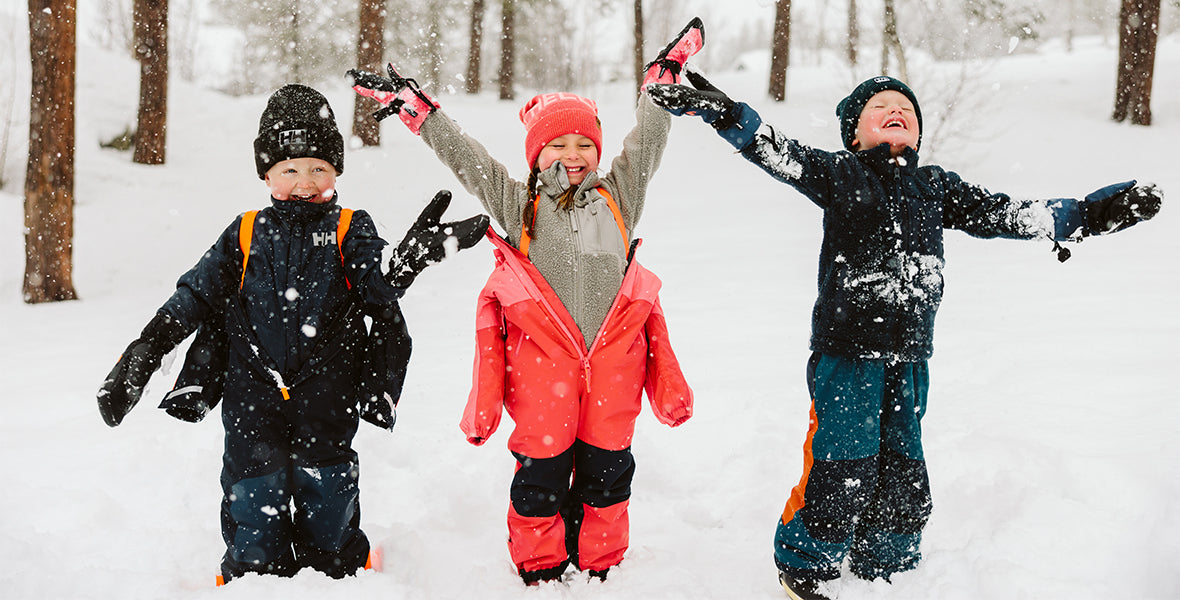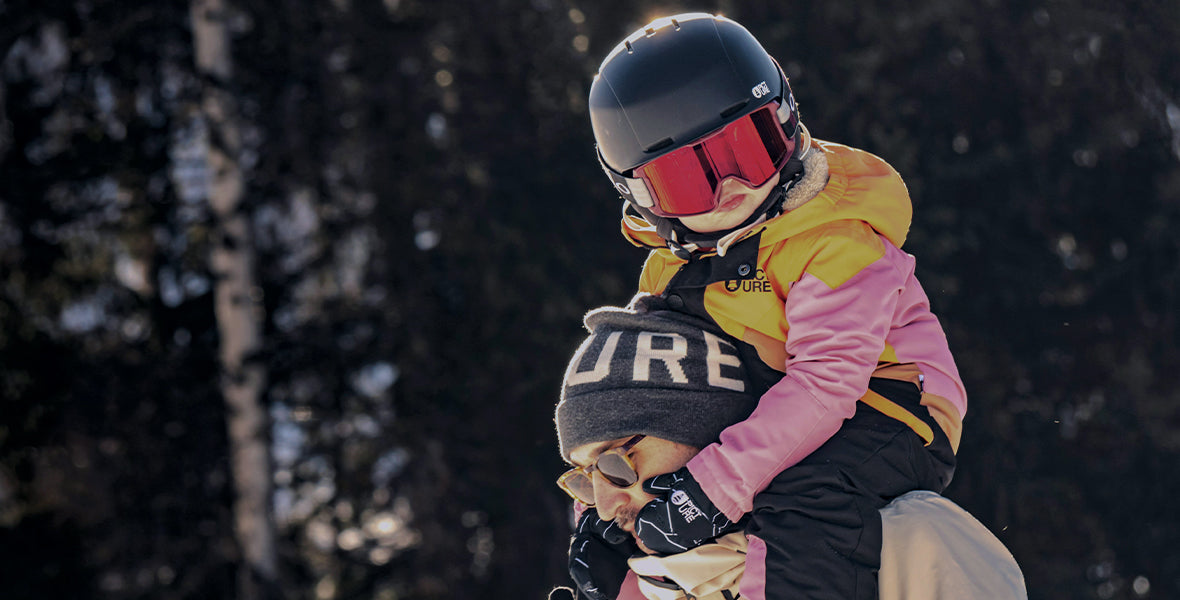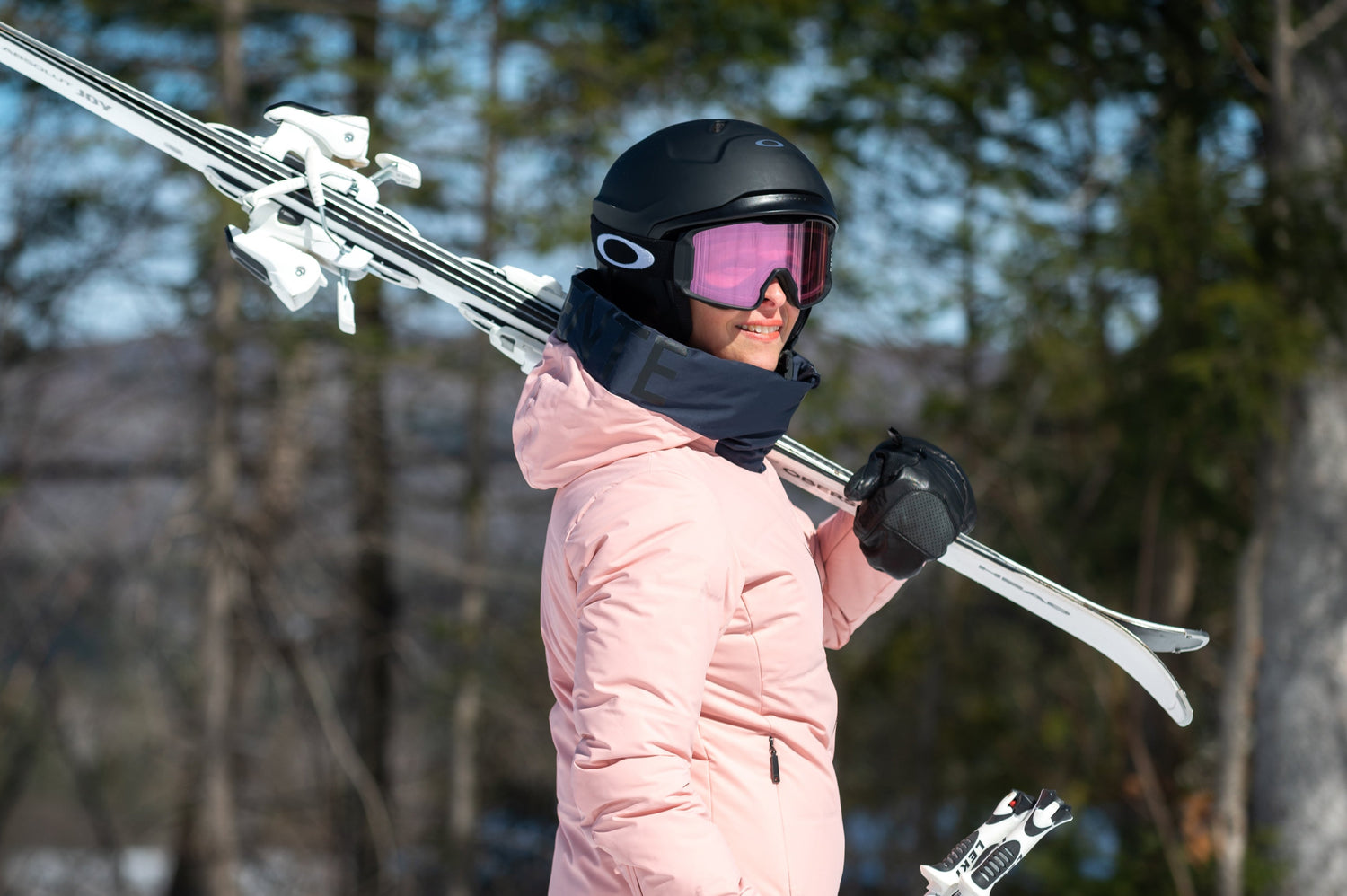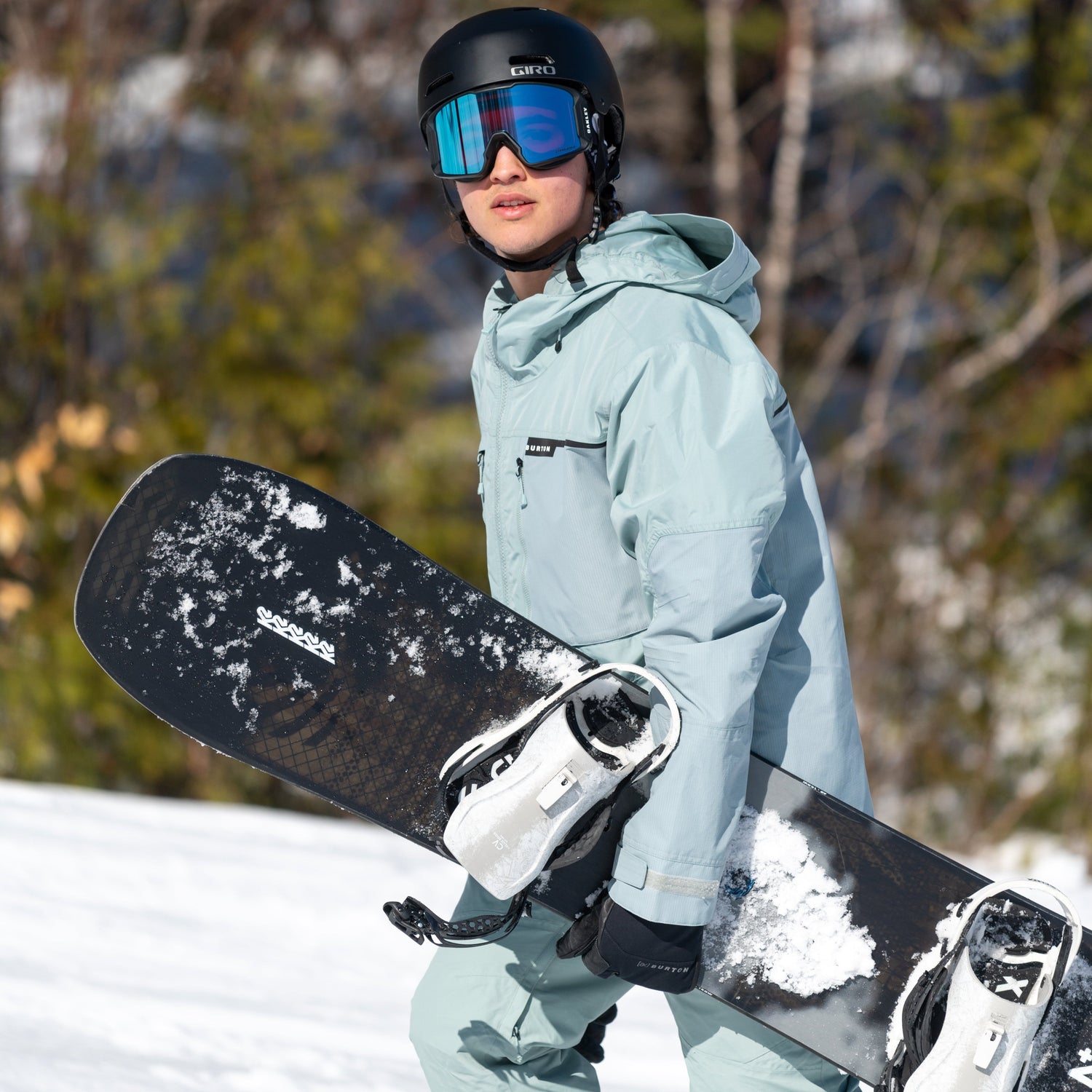How to Dress Kids in Layers?
Layering lets you regulate warmth based on weather and activity level. By combining a breathable base layer, an insulating mid layer, and a protective outer layer, kids stay warm without overheating while they play. A layer can easily be removed if they get too hot.
What’s the role of a base layer?
A good base layer is the foundation. Since it’s in direct contact with their skin, it should be comfortable. A base layer’s role is to keep your child warm and dry. The golden rule is to avoid cotton at all costs. This material doesn’t create warmth, retains moisture when wet and doesn’t dry quickly.
The main materials used for designing base layers are merino wool and synthetic fibres.
Advantages of Merino Wool
- Temperature regulation
- Naturally soft to the touch
- Anti-odour
- Retains its thermal properties even when wet
- Durability
- Natural fibre
Advantages of Synthetic Fibre
- Quick drying
- Fast moisture wicking

How to add warmth with a mid layer?
The mid layer acts as an insulator. It’s worn over the base layer. It can be either a quilted jacket insulated with down or a synthetic fibre or a fleece shirt or jacket.
When it comes to performance, down is warmer but less breathable than synthetic insulation. The advantage of this insulating layer is that they can wear it in spring and fall as a coat.

What to look for in a kids’ winter jacket?
A winter jacket is the centrepiece. Make sure this part of your child’s winter outfit is well insulated with down or a synthetic fibre. Also keep in mind that just because a jacket is very thick doesn’t mean it’ll be warmer. New technologies for synthetic fibres are lighter and more streamlined. They do a good job retaining body heat.
Keep in mind that design details can make a difference: adjustable cuffs and a drawcord hem at the waist help block the wind and trap warmth, and a hood protects the head and neck.
Aspects to Consider for a Kids’ Winter Jacket
- Waterproofness
- Breathability
- Insulation type
- Windproof fabric
- Hood
- Adjustments
- Pockets with zippers

How to choose the right snow pants?
Snow pants are just as important as a winter jacket. They must be well insulated and durable so that your little one can frolic in the snow without holding back. Also, check the fit at the waist so that the pants can keep up with growth spurts during the season.
Snow pants with suspenders are an outstanding choice to complete a winter outfit. They provide excellent protection because they cover the upper body. This fit also provides additional insulation.
Aspects to Consider for Kids’ Snow Pants
- Waterproofness
- Breathability
- Insulation type
- Windproof fabric
- Waist adjustment
- Pockets with zippers
- Fabric reinforcements at the knees

Are one-piece snowsuits a good option?
One-pieces are another great option for your young outdoor enthusiasts. They have the advantage of providing outstanding protection against the cold and snow, which have no gaps to slip through. They trap heat and provide optimal comfort.

What are the most important winter accessories for kids?
Accessories round out winter outfits and keep your kids warm from head to toe. As with base layers, it’s best to choose synthetic fibres or merino wool, which regulate moisture more effectively, and to avoid cotton.
Mittens and Gloves
Choose mittens that are waterproof, breathable, and insulated. They’ll keep little hands warm and dry even in freezing weather. An adjustable wrist prevents snow from getting in, while attachment straps keep them from getting lost during play. Long-cuff models that go over the jacket sleeves block out cold and moisture for extra protection.
Hats and Balaclavas
The head is one of the main sources of heat loss. Choose a warm beanie that covers the ears well, or a balaclava that protects the head, face, and neck.
Neckwarmers
A neckwarmer keeps their necks warm without hindering movement. Safer than a scarf, it stays securely in place—even during sledding or snowball fights.
Socks
High-quality socks make all the difference. They should fit snugly without wrinkles and be thin enough not to compress the toes inside the boots. Reinforced heels and toes extend their lifespan, even after many washes.
Winter Boots
Boots are essential for keeping little feet warm and dry. Choose a model that’s lightweight, waterproof, and insulated, with a slip-resistant sole for good traction on snow. A warm lining in merino wool or synthetic fibres helps retain heat, while a collar that overlaps the snow pants—or better yet, with a drawstring closure—will keep snow from getting in.
Winter Clothing That Grows with Your Children
Your young ones will keep having growth spurts for a few years. Most kids’ winter clothes feature a system that lengthens the sleeves of winter coats and the bottom of snow pants. That’s an essential feature!
Why is waterproofness so important?
Children’s winter clothing is made for playing in the snow. Since they sometimes spend many hours outside, waterproofness is a critical feature.
Look for waterproofness to be noted on the garment. Clothing that’s only water-resistant isn’t waterproof. Ideally, it will have a waterproof membrane and waterproof coating. That’s the perfect combination.
Friendships are woven together during outdoor adventures. Bundle them up and inspire them to play outdoors!
FAQ — Kids’ Winter Clothing
How can I tell if a winter jacket is warm enough for my child?
Check the insulation: down is the warmest option, but high-quality synthetic insulation also traps heat effectively while drying faster. Make sure the jacket is also windproof and waterproof.
What’s the best material for kids’ winter base layers?
Merino wool is ideal for keeping children warm and dry. Synthetic fibres, which are more affordable, dry faster and are best for higher-intensity activities.
How should I care for kids’ winter clothing?
Wash them in cold water with a mild detergent and avoid the dryer. Air-dry to preserve the fabric’s insulating and waterproof properties. Always check the manufacturer’s instructions, as recommendations may vary depending on the material.



